Ah Puch: Evil Death God Of Underworld Who Hated Souls In Maya Beliefs
A. Sutherland - AncientPages.com - In the Mayan supernatural world, we meet many gods with very specific attributes and special functions assigned to the gods.
Then Maya gods had human characteristics and had or represented animal forms. Most Mayan gods embodied the celestial bodies or powerful forces of nature such as rain, lightning, wind, or thunder.
Left: Representation of Maya God Ah Puch. Credit: A history lover - CC BY-SA 4.0 - Right: Ah Puch by an unknown Maya artist. Credit: Public Domain
Maya admired them, had to show them obedience, and make sacrifices, often from their own blood. Certain gods were feared by Maya, especially those associated with death, because these people were much more afraid of death than other cultures of Mesoamerica.
One of them was an evil god of death, Ah Puch (“to spoil, to melt or dissolve”), whose domain was the ninth and, simultaneously, the lowest part of the Maya underworlds. The Quiche (K'iche) Maya believed that he ruled over Metnal (Xibalba - "place of fear"), while in the mythology of the Yucatec Maya, mostly from Mexico, Belize, and Guatemala, he was one of several Lords of Xibalba.
Ah Puch had an awful appearance of a skeleton-like creature. He brought death and serious illness and was always malicious, hunting the houses of vulnerable people.
It was believed that he used to place the human soul on fire after a person died, and then he threw cold water on this fire while the soul terribly cried in pain. His torture of the soul continued when he again set it to burn. He could repeat the same repeatedly until the tortured soul dissolved completely.
He also had several names, such as Yum Cim or Yum Cimil, and was associated with the number 10.
As depicted, Ah Puch has decaying flesh on his large body, and his head looks like a skull; sometimes, his neck or his hair is decorated with a necklace made of eyeballs. He is often shown with the bells and certain symbols of death, such as a screech owl, a dog, and a vulture, a Moan bird, often encountered in Mesoamerican cultures.
To this day, legends are saying that when an owl screeches in the darkness, it means someone nearby will die. If you hear a hoot, take a deep breath and count to ten.
Perhaps it helps, or perhaps not.
Updated on March 3, 2023
Written by – A. Sutherland - AncientPages.com Senior Staff Writer
Copyright © AncientPages.com All rights reserved. This material may not be published, broadcast, rewritten or redistributed in whole or part without the express written permission of AncientPages.com
More From Ancient Pages
-
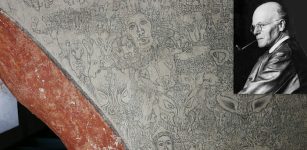 Mystery Of The Demon Wall In Sauherad Church Finally Solved
Archaeology | Dec 15, 2021
Mystery Of The Demon Wall In Sauherad Church Finally Solved
Archaeology | Dec 15, 2021 -
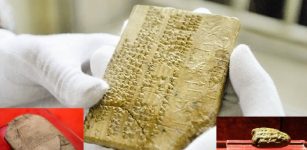 Priceless Cuneiform Clay Tablets Of The Achaemenid Empire On Display At Qazvin Museum
Artifacts | Jul 24, 2020
Priceless Cuneiform Clay Tablets Of The Achaemenid Empire On Display At Qazvin Museum
Artifacts | Jul 24, 2020 -
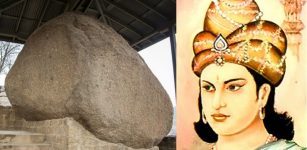 Mansehra Rock Edicts – Last Words Of Emperor Ashoka
Featured Stories | May 27, 2019
Mansehra Rock Edicts – Last Words Of Emperor Ashoka
Featured Stories | May 27, 2019 -
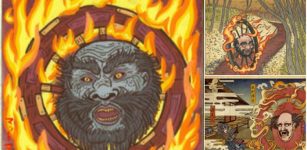 Wanyūdō The Soultaker – Fearsome Yōkai In Japanese Mythology
Featured Stories | Nov 22, 2017
Wanyūdō The Soultaker – Fearsome Yōkai In Japanese Mythology
Featured Stories | Nov 22, 2017 -
 On This Day In History: Western Roman Emperor Severus II Died – On Sep 16, 307
News | Sep 16, 2016
On This Day In History: Western Roman Emperor Severus II Died – On Sep 16, 307
News | Sep 16, 2016 -
 3,000-year-old knight discovered at the Palidli necropolis
Civilizations | Aug 22, 2015
3,000-year-old knight discovered at the Palidli necropolis
Civilizations | Aug 22, 2015 -
 Yamna Culture Started Cannabis Trade 5,000 Years Ago
Ancient History Facts | Aug 6, 2016
Yamna Culture Started Cannabis Trade 5,000 Years Ago
Ancient History Facts | Aug 6, 2016 -
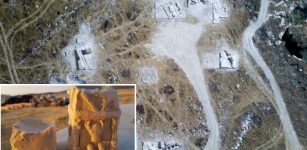 Large Mysterious 2,000-Year-Old Structure Discovered At The Center Of A Military Training Area In Israel
Archaeology | Dec 3, 2017
Large Mysterious 2,000-Year-Old Structure Discovered At The Center Of A Military Training Area In Israel
Archaeology | Dec 3, 2017 -
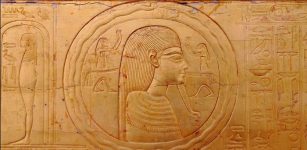 Ouroboros: Ancient Infinity Symbol Used By Different Ancient Civilizations
Ancient Symbols | Oct 3, 2017
Ouroboros: Ancient Infinity Symbol Used By Different Ancient Civilizations
Ancient Symbols | Oct 3, 2017 -
 1,200-Year-Old Wari Temple Discovered In Peru
Archaeology | Feb 24, 2023
1,200-Year-Old Wari Temple Discovered In Peru
Archaeology | Feb 24, 2023 -
 How Pre-Industrial Communities in Northeastern Europe Adapted to Climate Changes Over the Past Two Millennia
Archaeology | Feb 3, 2025
How Pre-Industrial Communities in Northeastern Europe Adapted to Climate Changes Over the Past Two Millennia
Archaeology | Feb 3, 2025 -
 Aditi – Primeval Hindu Goddess Who Is Source Of All Living Beings
Featured Stories | Apr 3, 2021
Aditi – Primeval Hindu Goddess Who Is Source Of All Living Beings
Featured Stories | Apr 3, 2021 -
 Guardians Of The Mounds – Battle To Save Scythian Burial Mounds From Destruction Continues
Archaeology | May 11, 2021
Guardians Of The Mounds – Battle To Save Scythian Burial Mounds From Destruction Continues
Archaeology | May 11, 2021 -
 Ancient Stone Cylinders Shed New Light On The Invention Of Writing In Mesopotamia
Artifacts | Nov 6, 2024
Ancient Stone Cylinders Shed New Light On The Invention Of Writing In Mesopotamia
Artifacts | Nov 6, 2024 -
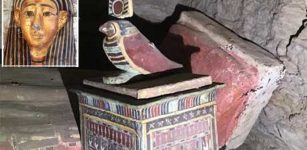 Huge Number Of Intact, Painted Coffins In Shafts Of Egypt’s Saqqara Necropolis
Archaeology | Nov 13, 2020
Huge Number Of Intact, Painted Coffins In Shafts Of Egypt’s Saqqara Necropolis
Archaeology | Nov 13, 2020 -
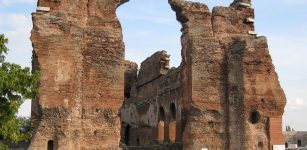 Pergamon – One Of ‘Seven Churches Of Asia’ With Great Library And Sophisticated Water Supply System
Civilizations | Jul 25, 2018
Pergamon – One Of ‘Seven Churches Of Asia’ With Great Library And Sophisticated Water Supply System
Civilizations | Jul 25, 2018 -
 2,500-Year-Old Illyrian Helmet Unearthed From Burial Mound In Croatia’s Peljesac Peninsula
Archaeology | May 7, 2024
2,500-Year-Old Illyrian Helmet Unearthed From Burial Mound In Croatia’s Peljesac Peninsula
Archaeology | May 7, 2024 -
 Burnt Food Remains In Neolithic Cooking Pot Sheds Light On 5,000-Year-Old Food Preparation
Archaeology | Jan 23, 2024
Burnt Food Remains In Neolithic Cooking Pot Sheds Light On 5,000-Year-Old Food Preparation
Archaeology | Jan 23, 2024 -
 Europe’s Oldest Time Capsule Discovered Inside A Statue Of Jesus In Spain?
Archaeology | Dec 1, 2017
Europe’s Oldest Time Capsule Discovered Inside A Statue Of Jesus In Spain?
Archaeology | Dec 1, 2017 -
 Late Neolithic Italians Mastered Complex Metal Technologies – New Study
Archaeology | Jan 22, 2020
Late Neolithic Italians Mastered Complex Metal Technologies – New Study
Archaeology | Jan 22, 2020

